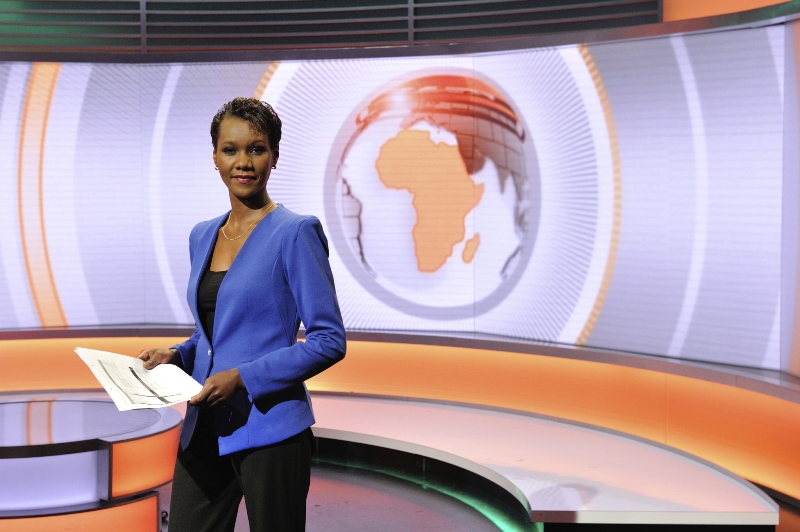By Bobastles Owino Nondi and Ogova Ondego
Published September 23, 2004
It is Friday evening and people are returning home from work. In a public service vehicle known as a matatu in Kenya, a passenger in the back seat unsuccessfully stretches his hand to reach the conductor to collect his change. When he nudges the woman ahead of him to help draw the attention of the conductor to him, the woman turns to her friend and says, “What does this Luo man want from me?”
Her friend answers with a giggle: “You just know how Luos act whenever they are around women!”
His pride pricked, the said Luo passenger counters, “So you thought I was going to steal from you like your Kikuyu brothers do?”
This encounter may not mean much to any one who does not know about the stereotypes associated with the two communities. Thus one could wonder why it should turn nasty as it does when travellers take sides, according to their ethnicity and perception of the communities to which the quarreling man and woman belong.
Well, whereas the libido of the Luo is said to be almost uncontrollable, the Kikuyu greed for materialism is almost legendary!
It is against the backdrop of such ethnic chauvinism and stereotypes leading to tongue-lashing that Heartstrings Kenya ensemble, a theatre company, came up with Villages of Kenya, a theatre festival running throughout August 2004, to highlight similarities and differences among Kenyan ethnic communities in an attempt to create understanding and unity in this East African nation in which ethnicity is at play in almost everything. But staging a play in vernacular here is like treading a minefield.
Any theme could be interpreted as being subversion and threatening the government of the day. Like malignant cancer, tribalism has proved incurable even with advancement in civilisation, urbanisation, education and democracy.
A Press Statement from Heartstrings said: “Villages of Kenya strives to celebrate the ethnic differences of the Kenyan society while showing that these differences can complement one another in fostering nationalism.”
When Heartstrings staged Duanyruok (Bad manners), their first play in Dholuo in 2003, the group was skeptical it would attract any audience at all. An adaptation of Cameroonian Guillaume Oyono-Mbia’s Three Suitors: One Husband, Duanyruok drew full house-audience mainly from the Luo community.
RELATED: 11th Jomba! Contemporary Dance Ready for Serving
Maro Okwako Or (Mother turns son-in-law into lover!) and Ndesnaa Bwoyo (Steal for me a little), Dholuo productions of Culture Spill of Fanuel Odera and Betty Achieng, attracted audiences of mixed ethnicity, hinting that time for theatre in vernacular may have come.
During the 2002 French-sponsored annual Nairobi Theatre Extravaganza, Friends of Theatre showcased Cajetan Boy’s Benta in Dholuo as Mos Benta Mos.
While the move was seen as bold and rare, doubts are cast on the appropriateness of staging drama in indigenous languages. In the 1970s, Ngugi wa Thiong’o, through his Kamirithu Cultural Group, scripted and acted plays in Gikuyu. Wa Thiong’o was seen as agitating against the establishment. His play, Ngaahika Ndeenda (I Will Marry When I Want), was banned in 1977 as it entered its fourth week of performance that had attracted audience of more than 10,000 people. Wa Thiong’o, Kenya’s best-known literary mind, was arrested and detained.
Then playwright/humourist Wahome Mutahi got on stage with his Igiza Productions. Performing mainly in Gikuyu and in beer-drinking places, critics accused him of ‘cheapening theatre’ for taking it to ‘inappropriate places.’
Mutahi responded that he was not only demystifying theatre but was taking it to the people. More plays like Dwanyruok and Wamuchuthi (Gikuyu translation of Ugandan Robert Serumaga’s Majangwa), were staged.
Chris Wanjala, a literature lecturer at the University of Nairobi, says, “As we act in vernacular, we should help those who don’t understand the language to follow the play.”
Wanjala says this could be achieved if the artists embraced technological development. “I have seen it in Korea and in churches where overhead projectors are used to give subtitles,†he explains. He says thespians on stage could have their images on projectors with English subtitles to bridge gaps for non-speakers of the language used by the actors.
John Habwe, a Kiswahili scholar and novelist, lauds the move: “This is a cultural revolution which we need badly. It is a trend to globalisation, which is an opportunity to showcase to the world what we have.â€
RELATED: International Theatre Festival Comes to Kampala
On those who regard the move as tribal, Dr Habbwe says, “We have to accept ethnic divisions and give them a positive interpretation. By pretending to get too English, we are simply sitting somewhere and looking at ourselves as inferior beings.â€
But Dr George Odera Outa, a theatre lecturer at the University of Nairobi, while presenting a paper on Kenyan theatre at the French Cultural and Cooperation Centre during the Villages of Kenya festival, differs. He argues that the late Mutahi’s diversion into Gikuyu theatre was a way to marshal his tribe against the then repressive Kenya African National Union regime of Daniel arap Moi.
Dr Kithaka wa Mberia of the Department of Linguistics and African Languages at the University of Nairobi defends Mutahi saying the way forward in Africa should be to do drama in local languages.
“After independence, everybody wanted to imitate the Mzungu; we have realised our mistake,” says Wambui wa Murima, a poet and actress.
But as many are quickly finding out, staging theatre in vernacular is not all about scripting a play in one’s mother tongue. You got to have those who appreciate theatre from that mother tongue.
Olenyala hano tawe (Don’t urinate here in Luluyia!) and Nikivite (Overtaken by events in Kikamba) were not well attended though being staged in the languages spoken, respectively, by the third and fourth largest communities in Kenya.
When Mutahi and Titi Wainaina wrote Jomo Kenyatta the Man in Kiswahili after well attended shows in Gikuyu hoping to attract even more audiences, the former said that more than 80 per cent of the audience who turned up for the translation were Kikuyu.
RELATED: Combining Science and Art to Explain the Origin and Development of Humanity
When Lwanda Magere, a play in Dholuo on a legendary warrior by the same name, was performed at the Kenya National Theatre in Nairobi, the turn up was so dismal that its producers had to run with it to the Luo town of Kisumu in an attempt to recoup their investment. Yet Kikuyu comedies like Wakanyote Njuguna’s Aroiga ni Mukuu (Tom says he is Dead) and Eduardo Waigwa’s Andu ihererero (People in Hell) managed to attract a sizeable audience in Nairobi.
As such, should the French-sponsored Heartstrings’ Villages of Kenya festival succeed in blending and attracting the various communities annually, it would be a giant step in shaping theatre in indigenous languages that has struggled for almost three decades.
Christopher Okinda, Outreach Assistant for Heartstrings Kenya, says: “If we can bring Kikuyu, Luo, Kamba, Luyia, Asian, Kalenjin and all other peoples of Kenya together and expose the weaknesses and strengths of each in the presence of all, they can come out knowing that we are similar as we are different and stop tongue-lashing and mutual mistrust.”
The concept appears to be getting somewhere. Whenever Heartstrings staged a play in one language, Okinda says, they received feedback from other communities requesting the next production be done in their language. This was the premise upon which the Villages of Kenya festival was hatched.
Theatre in vernacular is now more financially viable than its English or Kiswahili counterparts, says Okinda and Sammy Mwangi despite the dismal performance of Nikivite that registered only 15 people.
This will improve as we continue staging more plays in Kikamba, Mwangi says. This appears to corroborate ArtMatters.Info report that a play in Gikuyu would cost twice as much as its English or Kiswahili counterpart to produce and run for months.
In 1991, ArtMatters.Info says, the defunct Sarakasi Players staged Ciaigana ni Ciaigana (an adaptation of Enough is Enough) that ran for 18 months. Mugaathe Mubogothi (His excellency the Hallucinator) and Igooti ria Muingi (People’s court) of Mutahi and Wahome Karengo, ran non-stop for eight months in 1995 and 1998, respectively. Makararira Kioro (They will Cry in a Latrine), also by Mutahi and Karengo, ran for 100 weeks despite appearing to be too critical of the then ruling KANU party. Its success notwithstanding, performing in vernacular is difficult.
“You risk being seen as a tribalist if you cannot cater for all the ethnic communities,†Okinda says. Villages of Kenya festival only showcased plays from five communities because of a number of huddles. The plays were in Kikamba (Nikivite), Luluyia (Olenyala hano Tawe), Gikuyu (Maitho Matatu, an adaptation of Servant of Two Masters by Carlo Goldoni), Dholuo (Magdalina Leng’na; Magdalena get out of my way) and Sheng (Dreams za Yosefu; an adaptation of the Hebrew story of Joseph and his brothers).
The time taken in researching, scripting, casting and rehearsing of the plays was one of these problems.
“You want to get the names, places, events, pronunciations†just everything about these people ‘right’,” says Okinda.
Ken Waudo, who directed Olenyala hano Tawe, said that his problem was accommodating all the 16 sub-tribes within the “Luhyia†grouping. “It was difficult to come up with a play that suits all the Luyia communities, with the theme and artistry remaining intact,†he says.
RELATED: Two Decades of Contemporary African Dance Without a Following
This problem is also encountered with Kalenjin, Swahili and Mijikenda communities that are divided into mutually intelligible dialects. While some communities lack thespians, most do not have actors with certain vernacular fluency as most urban Kenyans do not speak their vernacular.
In many schools pupils and students are punished for speaking in their mother tongue or the national language, Kiswahili. At home, children are seen to be fashionable and sophisticated if they spoke English and a little Kiswahili and never the indigenous language. The situation is worse in mixed marriages where children cannot speak either language of their parents.
Planning to take their campaign to the people, Okinda reiterates, “It is that individual pride that translates into communal and national pride.†Infidelity, witchcraft, materialism, child rights, commercialised marriages and political high-handedness are some of the issues that the Villages of Kenya festival tackled.
When Ngugi wa Thiong’o delivered a lecture at the University of Nairobi on the role of African universities in August 2004, he stressed that such institutions should be centres for the restoration and uplifting of African traditions, cultural values, practices and languages. If this is something to be implemented, then one of the vehicles is theatre in vernacular.



